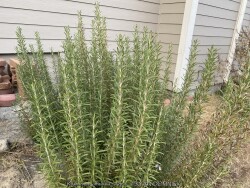
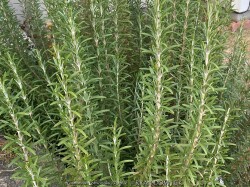
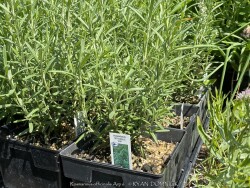
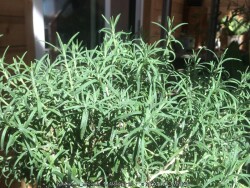
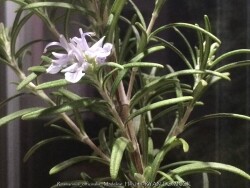
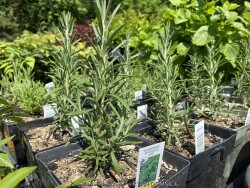
Plant Min Zone: 6a
Plant Max Zone: 9b
Sunlight: All Day Full Sun, Full Sun, Part Sun
Water / Rainfall: Low
Soil Quality: Poor, Average
Bloom Season: Late Summer
Flower Color: White, Light Purple
Berry / Fruit Color: None
Spring Foliage Color: Green
Summer Foliage Color: Green
Fall Foliage Color: Green
Evergreen Foliage: Yes
Winter Interest: Yes
Scented Flowers: Yes
Drought Tolerance: High
Wet-Feet Tolerance: Low
Humidity Tolerance: Low, Medium
Wind Tolerance: Medium, High
Poor Soil Tolerance: Rocky Soils, Sandy Soils, Alkaline Soils (high PH)
Height: 1' - 3'
Width: 1' - 3'
Growth Rate: Slow
Service Life: Medium: 3-5 years
Maintenance Need: Low
Spreading Potential: Low
Yearly Trimming Tips: Trim Evergreen Perennial Only if Winter-Kill Occurs.
Plant Grouping Size: Specimen Planting of 1-3
Best Side of House: South Exposure, West Exposure
Extreme Planting Locations: Resistant to Rabbits
Ornamental Features: Multiple Seasons of Interest, Long Lasting Fall Color, Exceptional / Colorful Foliage
Special Landscape Uses: None
Possible Pest Problems: Disease, Root Rot Disease
Plant Limitations: May get Occasional Winter-kill, Needs Thick Winter Mulch, Needs Excellent Drainage
Shippable in 2026: YES
Rosemary is one of the most well-known herbal and edible plants. It features grayish green aromatic and evergreen foliage with small white flowers. Blooming is usually short-lived and not a main reason to grow Rosemary. This plant is native to Mediterranean climates with average moisture in the summer and dry, mild winters. Because of its heritage, it resents cold wet winters and needs well-drained sandy, silty, or rocky soil. In the short term, it will typically grow in any soil during the summer making it very useful even as an annual. In Kansas landscapes, it is commonly used as an annual or short-lived perennial with winter kill (below 0 to -10 degrees F) being it's number one enemy. It does not have very good ability to come back from the lower portion of the stem or root system like other perennials after winter-kill. Root rot is also likely when placed in poor draining soil and sometimes even in rich garden soil. Summer heat not a problem; to have a chance of survival as a perennial, plant in a protected area on a South or West wall. Rosemary is actually a woody shrub in mild zone 8 and 9 climates and grown like a in perennial in zone 6/7. When grown as a perennial, every so often you do need to trim it back to a few inches off the ground. Rosemary combines nicely with any other flowers or where needing a perennial with evergreen winter color. In Kansas, Rosemary is commonly grown as an outdoor patio plant that you move in for the winter to enjoy fresh clippings. When grown that way, remember that Rosemary is cold hardy to about 0 degrees F so you can skip the first few freezes before moving it in if you forget. This delay is probably beneficial because if you keep it in the house too long especially with poor light it will display poor quality elongated growth and die. Keep in a bright window and do not let it dry out completely. Strangely enough being from a desert climate, rosemary doesn't really warn you by wilting, if the soil gets extremely dry for too long, it just suddenly dries up and dies. Despite all of these pointers, rosemary is very easy to overwinter in the house when placing back out in the following spring. 'Arp' is exceptionally cold hardy; possibly the most cold hardy rosemary being a treu perennial in zone 6 with dark blue hummingbird feeding flowers.